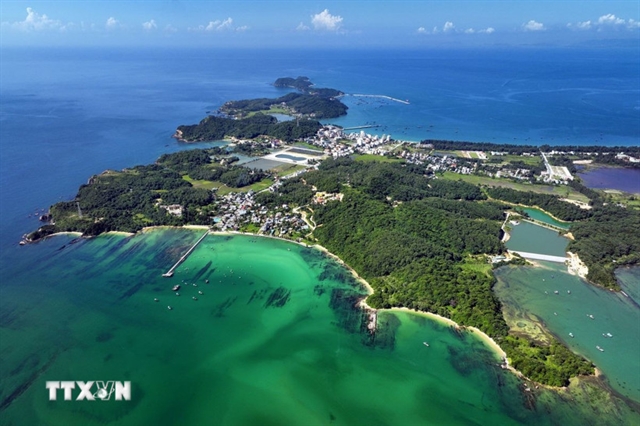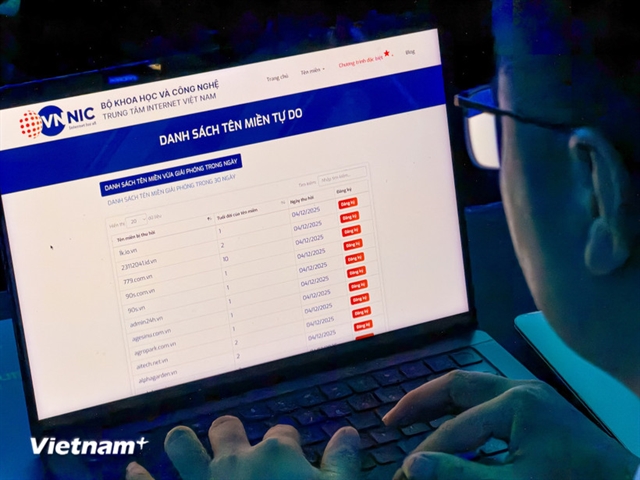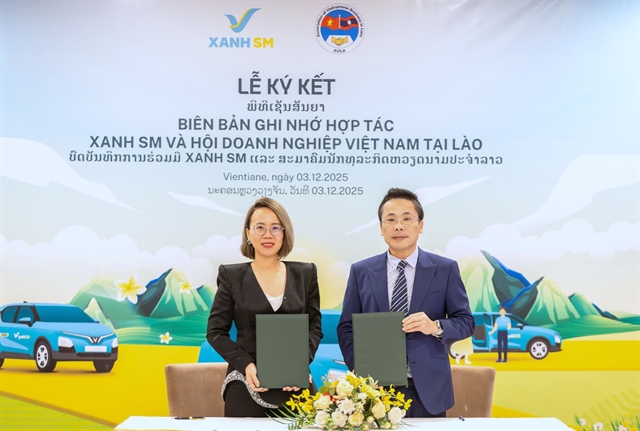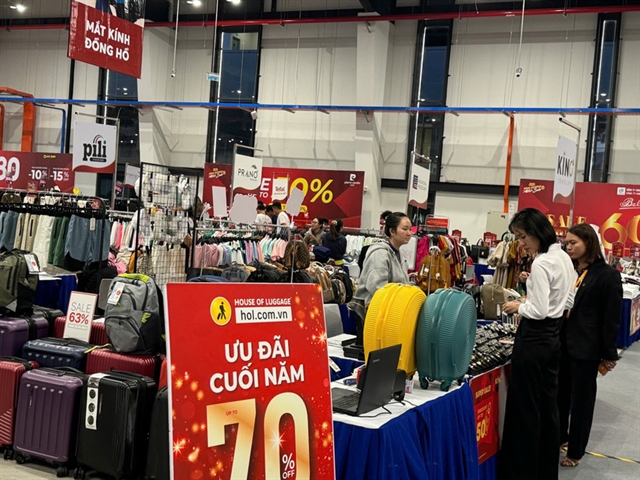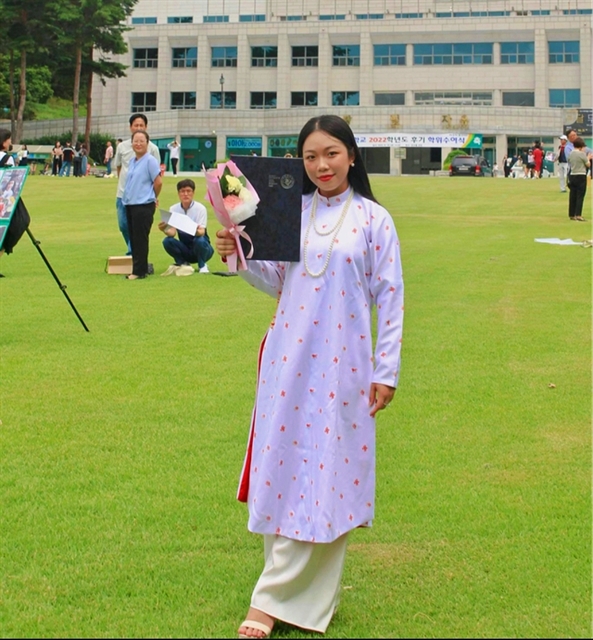 Talk Around Town
Talk Around Town
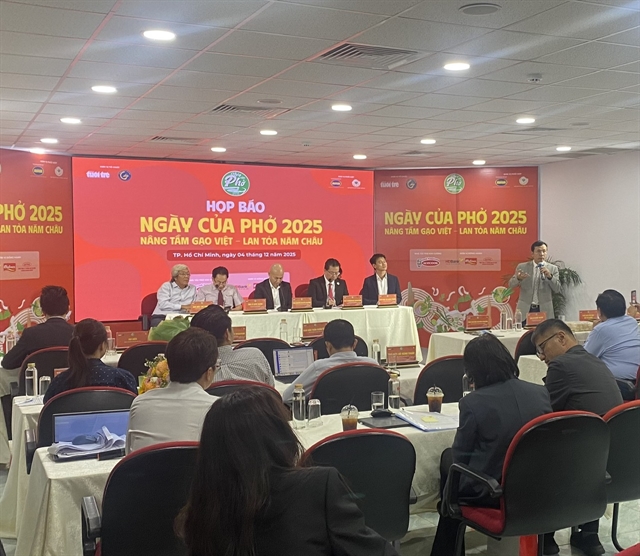
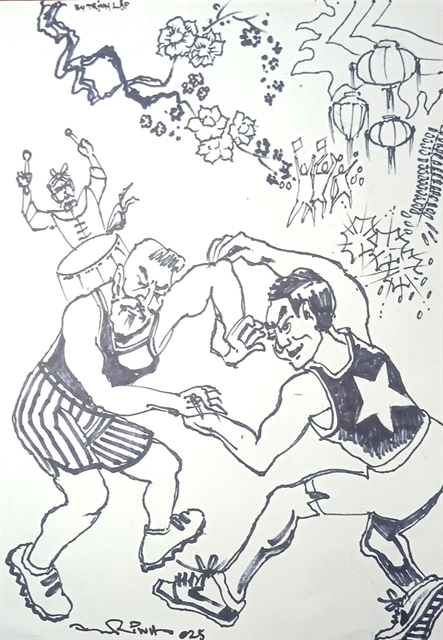
|
| Illustration by Trịnh Lập |
By Thanh Nga
In recent days, the air is alive with excitement as localities enthusiastically kick off their spring village festivals, marking the vibrant start of the year.
Among the flurry of activities and games, the wrestling ring stands out as a magnetic draw for both locals and tourists alike.
The presence of foreign wrestlers, particularly those with striking muscular physiques, adds an electrifying intensity to the matches.
Recently, the dynamic image of Belarusian wrestler Zakhar Dzmitrychenk has been making waves in the media and on social networks. His participation at northern village festivals has become a hot topic, sparking excitement and curiosity.
Dzmitrychenk, 29, is not just a formidable athlete; he’s a bronze medalist at the world classical wrestling competition. With his towering stature and charismatic presence, he has quickly become a fan favourite.
His debut in the traditional Vietnamese wrestling scene at the northern village festivals following the Lunar New Year 2025 was nothing short of spectacular -- he dominated his opponents with remarkable strength, leaving spectators in awe.
Affectionately nicknamed 'Thor' by his Vietnamese fans, Dzmitrychenk's appearance is sure to draw huge crowds to wrestling events. Videos of his matches have gone viral, amassing impressive views and interactions on platforms like YouTube and TikTok. It's not just a wrestling match; it’s a cultural exchange that captivates audiences.
However, Dzmitrychenk's participation has sparked a hot debate in the community. Some voices express concern that inviting foreign wrestlers could overshadow the local talent, arguing that differences in physical strength might disrupt the festive spirit. Yet, many others celebrate this cultural interaction, recognising it as an opportunity to showcase Việt Nam's rich traditions to the world.
“If Vietnamese sports are to reach new heights, we must embrace learning and integration. Dzmitrychenk’s presence enriches our festivals, providing invaluable experience for our local wrestlers,” writes Đỗ Thanh Bình from Hà Nội. His enthusiasm reflects a broader sentiment: that these interactions foster growth and promote Vietnamese culture on a global stage.
Cultural researcher Nguyễn Ánh Hồng echoes this sentiment, noting how Dzmitrychenk’s participation highlights the beauty of Vietnamese traditions.
“Seeing a Belarusian wrestler in our arena brings joy and excitement. It’s heartening to know that our culture resonates beyond borders, attracting international interest,” she says. "The essence of these matches goes beyond winning; they embody the spirit of unity and celebration within the community."
Associate Professor Bùi Hoài Sơn says the spring wrestling festival is not merely a sport; it’s a celebration of courage and community pride.
“When young men step into the ring, they affirm their strength and bravery before their peers. It’s a connection to our heritage that transcends simple competition,” Sơn says.
While some worry about the fairness of matches against more muscular opponents, Sơn sees foreign participation as a unique opportunity.
“In an increasingly interconnected world, inviting international friends enriches our cultural tapestry. It can transform our village festivals into events that appeal to a global audience,” he says.
Reflecting on the success of foreign athletes in other sports, Hồng suggests that wrestling could similarly benefit from inviting international competitors.
“This is a chance for our wrestlers to elevate their skills while showcasing our traditions. The experience gained will undoubtedly strengthen the spirit of Vietnamese wrestling,” she says.
As these lively wrestling matches unfold, experts emphasise that rather than questioning the inclusion of foreign wrestlers, we should focus on how to welcome them effectively. “Creating friendly matches that honour our traditions while encouraging cultural exchange can be a winning formula,” Sơn says.
In promoting Việt Nam’s image globally, experts agree that the charm of our village festivals should not be underestimated.
“Often, it’s the simple traditions -- the vibrant drum sounds, the enticing aromas of bánh chưng and bánh dày -- that leave lasting impressions on international friends.”
To transform village festivals into attractive cultural tourism destinations, investment in organisation and communication is essential. Festivals should be highlighted on international platforms, showcasing their unique stories and images to entice visitors.
Moreover, engaging tourists in hands-on experiences -- whether through friendly wrestling matches, traditional cooking classes, or participating in local rituals -- will create unforgettable memories. “This interaction is what makes our festivals truly special,” Sơn says.
In essence, as we embrace the fusion of cultures in our village festivals, we celebrate our heritage and extend an invitation to the world. Let’s welcome this new era of cultural exchange, where the spirit of community and tradition thrives, creating a vibrant tapestry that enriches us all. VNS

